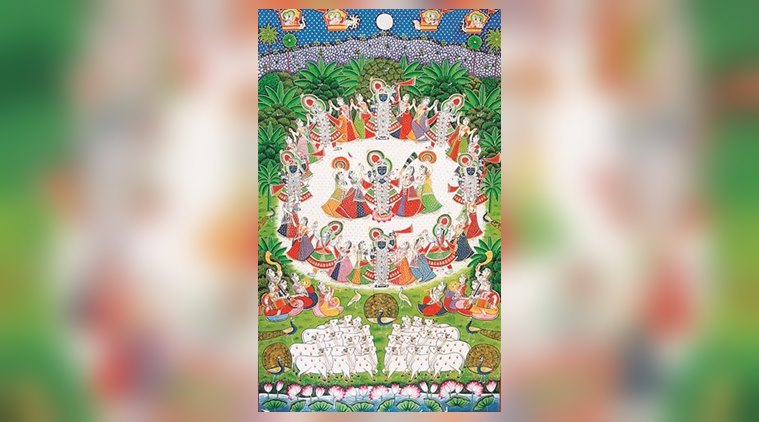
From Rajasthan comes the Pichwai, a form of fabric painting that was used to decorate the temple walls behind the idol of Shrinathji. The word Pichwai is derived from the Sanskrit words ‘pich‘ (back) and ‘wais‘ (hanging). Madhubani paintings, on the other hand, depict nature and religious motifs. No space is left empty and all gaps are filled with flowers, animals, birds and geometric patterns. The paint is drawn from the extracts of flowers and plants. The Gond tribe, originally from Madhya Pradesh, created a style of painting to decorate their homes and floors with motifs to attract good luck. Gond art has since moved on to paper and canvas and artists have their signature styles. Now, an exhibition in Pune, titled Traditional & Folk Art, brings together a number of diverse folk forms of India. It will be held at Conrad Pune on May 11, 12.00 pm to 7.00 pm. It is being organised by Secure Giving.
Radhika Gulati, Director of Secure Giving, says, “The traditional and folk art show was conceived after we realised that India’s folk arts were not getting as much attention as modern and contemporary art. We also thought that this could help and promote artists who have been practicing these art forms for generations, but don’t have the right platform to display their works as professionally as our contemporary art is showcased.”
Every form here has an interesting sociocultural story. Mata Ni Pachedi, meaning “Behind the Mother Goddess” is a cloth that depicts a temple of the Goddess. When the nomadic Vaghari community was barred from entering temples, they made their own shrines with depictions of the Mother Goddess on cloth. The paintings showcase the Mother Goddess dominating the central area surrounded by deities and commoners worshipping her. The exhibition features Mata Ni Pachedi by artist Sanjay Chitara.
The Pattachitra art from Odisha, presented by Pranab Narayan Das and Akshaya Bariki, is based on Indian mythology and the name evolved from the Sanskrit words “patta”, meaning canvas, and “chitra”, meaning picture. Mostly mythological, religious stories based on folk lore, are depicted in a mix of folk and classical styles. Bold, clean, angular and sharp lines characterize the art form. The craftsmen usually use cotton for this art work and, apart from paint, no additional embellishments are used.
The Sanjhi Paper Art stands out among the collection. This form of paper stencilling has flourished over the decades in Mathura in Uttar Pradesh, and master artists employ scissors and blades to create fine paper works.